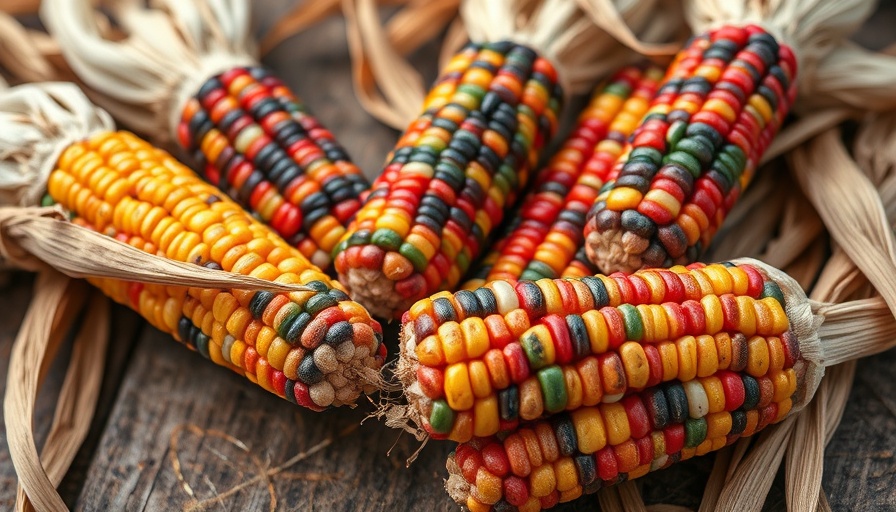
Transform Your Autumn Landscape with Ornamental Corn
As autumn approaches, it's time to think about how to enhance your landscaping with the seasonal beauty that ornamental corn can provide. Known formally as Zea mays, ornamental corn, or "Indian corn," stands out with its vibrant colors ranging from deep reds and purples to bright blues and yellows. Unlike the sweet and field corn varieties generally harvested for eating, ornamental corn serves a decorative purpose, making it a staple in fall gardens and home decorations.
Why Choose Ornamental Corn for Fall Decor?
The stunning variety of hues offered by ornamental corn inspires unique fall decor ideas, bringing warmth and character to any outdoor or indoor space. Their long, papery husks create a rustic aesthetic that pairs beautifully with pumpkins, hay bales, and other autumn favorites. Additionally, the kernels of ornamental corn can even be used for grinding cornmeal or grits, adding a multi-functional aspect to their appeal. Homeowners and gardeners can appreciate the versatile uses, from fresh displays to culinary delights, making ornamental corn not only beautiful but also practical.
Top Ornamental Corn Varieties to Explore
Gardening enthusiast Melissa Strauss recommends several standout varieties that capture the essence of fall:
- Glass Gem Corn: This variety is visually captivating with multicolored kernels that shimmer in the sunlight. Ranging from pink to green, they resemble tiny gemstones and grow between 6 to 10 feet high.
- Painted Hill Corn: Known for its colorful kernels that exhibit a striking combination of dark and light shades, this variety brings a harmonious blend of colors perfect for decorative arrangements.
- Strawberry Popcorn Corn: A unique choice that produces small, sweet kernels perfect for popping, creating a fun family activity while still adding aesthetic value to a seasonal display.
How to Grow Ornamental Corn Successfully
Growing ornamental corn can be as simple as growing regular sweet corn; however, there are some specific guidelines to keep in mind. Here are key tips for a successful growing experience:
- Sun and Space: Ensure that your ornamental corn receives plenty of sunshine and is planted in well-drained soil. Crowding can prevent proper pollination, so provide adequate spacing between the plants.
- Watering Needs: Consistent moisture is crucial. Regular watering, especially during flowering and kernel formation, will help achieve optimal growth.
- Planting Arrangement: Planting in blocks is recommended, which promotes better pollination and maximizes kernel production.
Unique Benefits of Including Ornamental Corn in Your Garden
Utilizing ornamental corn not only beautifies your outdoor surroundings but also fosters creativity. Their unique colors allow you to:
- Create eye-catching centerpieces for fall gatherings.
- Incorporate them into wreaths or garlands that celebrate the season.
- Engage your children or family in hands-on gardening experiences.
Conclusion: Taking Your Fall Decor to New Heights
Incorporating ornamental corn into your garden or home decor is an exciting way to embrace the beauty of autumn. Whether you're a seasoned gardener or a DIY enthusiast looking to start a backyard planting box in Muskegon, these stunning varieties of corn can add a dash of color and charm to your outdoor space. Don't hesitate to explore different ways to utilize them to enhance your fall ambiance.
For more tips and guides on backyard projects and designs in Muskegon, feel free to dive into various local resources and courses that cater to your gardening and landscaping needs!
 Add Row
Add Row 
 Add
Add 


Write A Comment